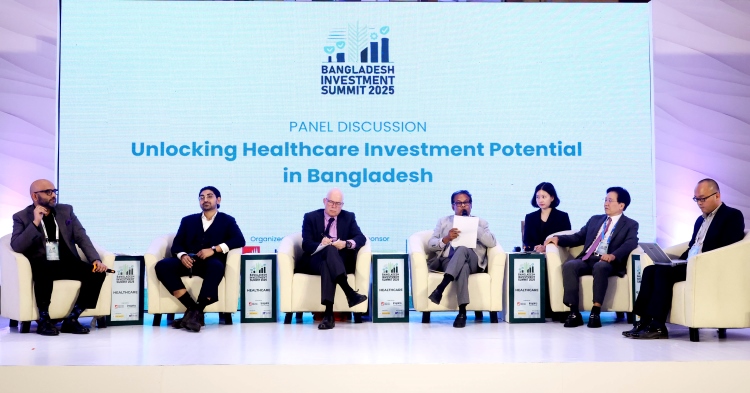News Flash

DHAKA, April 10, 2025 (BSS) - Experts at a session today urged the investors
to invest in Bangladesh's medical sector as it is experiencing robust growth.
They also projected that the market volume will reach US$ 23 billion by 2033,
driven by increasing demand for medical consumables and advanced diagnostic
tools.
They made the projection at a session on "Unlocking Healthcare Investment
Potential in Bangladesh" of the "Bangladesh Investment Summit 2025" at a
hotel in the city.
Md. Saidur Rahman, secretary of the Health Services Division, was the speaker
of the session while Sylvana Quader Sinha, founder, chair & CEO of Praava
Health delivered the keynote speech on "Unlocking Healthcare Investment
Potential in Bangladesh".
In his speech, Saidur Rahman described the remarkable growth of the country's
health sector and urged the investors to invest here.
"It's projected that the market volume of the country's health sector will be
$23 billion by 2033. It is clear that there are huge potentials for investors
of the country's health sector," he added.
Sylvana Quader Sinha said the medical equipment and devices market is
experiencing robust growth, projected to reach $3 billion by 2030, driven by
increasing demand for medical consumables and advanced diagnostic tools.
"The sector is heavily reliant on imports, creating a significant opportunity
for local manufacturing of medical devices, especially as the country works
towards self-sufficiency in producing critical healthcare products.
Investment potential exists in establishing manufacturing units for essential
medical consumables, like in vitro diagnostic test kits, and low-risk health
monitoring devices, and leveraging the B2C model to address the rising demand
for consumables. As the health complexity increases, the demand for OT
support and ICU equipment is also increasing, presenting the sector as a
lucrative segment for investment with high returns," she added.
The founder of Praava Health said healthcare has become one of the largest
sectors of the Bangladeshi economy, in terms of revenue, it has been growing
at a CAGR of 10.3 percent since 2010, employing nearly 0.3 million people
directly.
"Several factors are driving the growth of the healthcare sector, including
an aging population, a growing middle and affluent class, and the rising
proportion of non-communicable diseases. The healthcare industry of
Bangladesh comprises five prime subsectors: Healthcare Facilities,
Pharmaceuticals, Medical Equipment and Devices, Digital Healthcare and
Medical Biotechnology," she added.
Sylvana said the country's healthcare facilities are expanding with private
hospitals, clinics, and diagnostic centers showing strong growth.
"Public-private partnerships (PPP) and government incentives are encouraging
investments. The sector benefits from policies like tax exemptions for
private hospitals outside major cities, making it an attractive market for
both local and foreign investors. The ongoing need for tertiary and
specialized healthcare services in urban cities and the demand for primary
healthcare in rural areas enhance the sector's growth potential, positioning
it as a key segment to invest in," she added.
She said the pharmaceutical sector, recognized as a Pharmerging Market, is
projected to reach US$6 billion in 2025 at a 12 percent compound annual
growth rate (CAGR).
The industry is well known for branded generics-particularly in
gastrointestinal, antibiotic and antipyretic therapies that quenches nearly
all the domestic demand, she added.
Sylvana Quader said digital transformation is further accelerating the growth
in the healthcare sector. Since COVID-19, digital health has emerged as a key
area of innovation, gaining momentum as the tech-savvy youth population
increasingly turns to digital solutions for healthcare access.
The government's Digital Healthcare Strategy 2023-2027 aims to integrate
digital tools like cloud-based Electronic Health Records (EHRs) and
telehealth platforms to enhance healthcare delivery and reduce costs, she
continued.
She said this transition presents investment opportunities in cloud-based
services, interoperable health systems, and remote patient monitoring.
Additionally, partnerships with foreign tech companies for disease management
solutions and healthcare technology innovations will be crucial in driving
the sector's growth, she added.